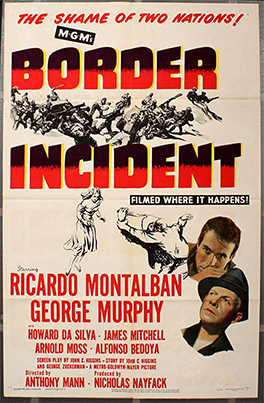
Few early filmmakers hold the distinction of shaping how we see (both literally and figuratively) a particular film genre. Cinematographer John Alton was one such filmmaker. This winter, film noir aficionado Jon Noe looks to shed some light on a creator who taught us much about storytelling done in darkness with his new class, Film Noir - Painting with Light. 
According to his New York Times obituary from 1996, John Alton was born in Sopron, Hungary, and immigrated to America in 1919. “After spending four years as a lab technician for Metro-Goldwyn-Mayer, he became a cameraman at Paramount in 1928, working on films like Spoilers of the West and Wyoming, which were produced by David O. Selznick. He also did location shooting in Europe for several films, including Ernst Lubitsch's Student Prince. In the early 1930's he went to Argentina, where he helped create the country's first sound stage and directed more than 20 films.”
Upon his return to Hollywood in the late 1930s, Alton collaborated on numerous low-budget B picture melodramas, establishing himself as a master of black and white filmmaking. Alton worked frequently with director Anthony Mann, becoming renowned thanks to his contribution to such films as He Walked by Night (1948), Raw Deal (1948), Hollow Triumph (1948), Border Incident (1949), Devil's Doorway (1950), Slightly Scarlet (1956) and T-Men (1947). During this time, Alton and a handful of peers helped root the genre of Film Noir, they just didn’t know it at the time.
Coined by French film critic Nino Frank, the term Film Noir (literally “black film” or “dark film”) was applied to films starting as far back as 1946, the moniker went unrecognized by the Hollywood film industry until the early 1970s. We now apply the term retroactively.
“Alton’s greatest contribution to film came in his ‘less is more’ style” says Noe. “Particularly his minimal lighting and the stark contrast between the dark and the light.”
Noe says he plans to screen some of Alton’s finest moments this quarter. “The best example is the final scene in the Big Combo where the high contrast and low angles work in tandem with a single light source. Or in The Spirtualist (AKA The Amazing Mr X) following a seance sequence shows what can be done with a single light source.” For Noe’s money, The Black Book (AKA Reign of Terror) (1949) directed by Mann is one of Alton’s crowning achievements. “Alton shoots the film so well it looks like a high budget film when in fact it had a very modest budget.”
The Black Book was shot with Broadway stars like Robert Cummings and Richard Basehart and filmed on sets costing a modest $40K. Of The Black Book, Anthony Mann said this in an interview with Cahiers du Cinema: “In view of the poverty of the production, I think it would have been difficult to do better, and Richard Basehart made a remarkable impression."
As melodramas, Film Noir are considered a triumph of style over substance, but Noe believes Alton lent enough visual innovation to his films to actually elevate the  narrative. “In Border Incident, a story of migrants and illegal immigration at the Mexican border, Alton uses numerous close ups of the characters to emphasize the desperation they are going through.” In that regard, the lighting and camera work in Border Incident invite the viewer to join in the story as a participant, raising the stakes and heightening the film’s dramatic impact.
narrative. “In Border Incident, a story of migrants and illegal immigration at the Mexican border, Alton uses numerous close ups of the characters to emphasize the desperation they are going through.” In that regard, the lighting and camera work in Border Incident invite the viewer to join in the story as a participant, raising the stakes and heightening the film’s dramatic impact.
Alton knew what he brought to Hollywood was significant, if not groundbreaking. “His stylized, Rembrandt-esque use of light has been credited with helping define the look of film noir,” said William Grimes of the New York Times. Alton went on to pen several books on cinematography, most notably Painting with Light (1949), a handbook for black and white lighting techniques that is taught in film programs the world over.
This winter, fans of Film Noir can look forward to seeing not only Border Incident (1949), The Spiritualist (1949) and The Black Book (1949), but The People Against O’Hara (1951) and The Big Combo (1955) as well.
Learn more about Film Noir – Painting with Light.